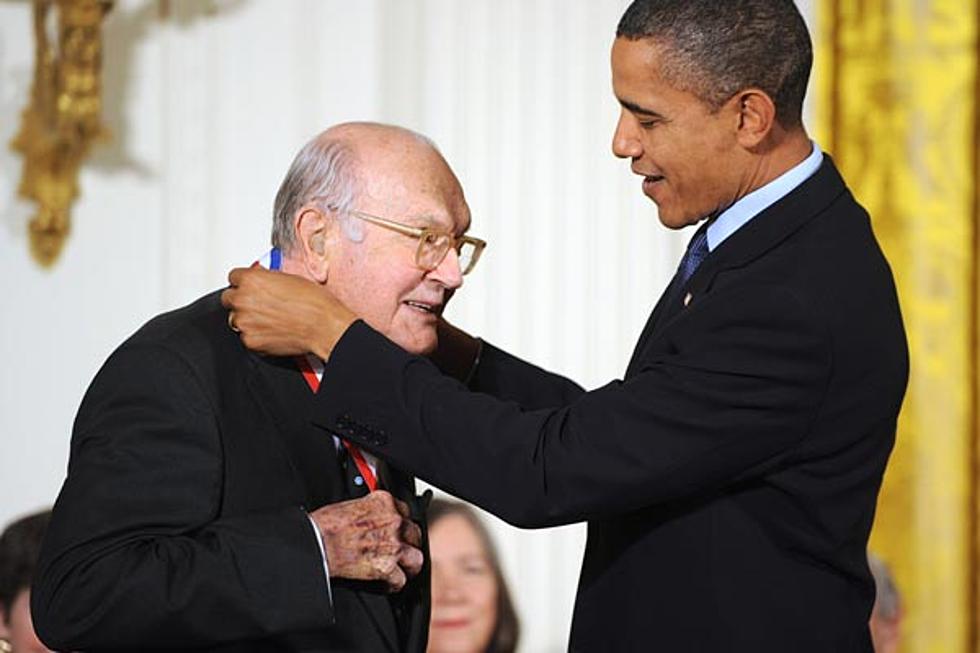![Spring = Tornadoes [VIDEO]](http://townsquare.media/site/146/files/2011/03/2576_tornado-intercept-twister-sisters-2_05320299.jpg?w=980&q=75)
Spring = Tornadoes [VIDEO]
Spring is around the corner, and with that, at least in West Texas, are tornadoes! My favorite time of the year! March 20th, marks the first day of Spring which, in turn, marks the start of tornado season. To me, tornadoes are one of the most beautiful things that nature has ever thrown at us - it's also one of the most destructive and deadliest. In fact, tornadoes are dubbed as In an average year, 800 tornadoes are reported nationwide resulting in 80 deaths and over 1500 injuries per year.
Obviously, I do not like the destructive part of a tornado, at least where people and property are concerned. What does fascinate me is how they are formed and the conditions of specific weather that ignite them. Plus, they are just pretty dang cool to see! I have have chased a few storms myself and to get close to these things is an adrenaline rush unlike anything else. I have played football and other sports, drove very fast in a car, and have ridden all kinds of roller coasters, but the rush you get when you get close to a twister is unparalleled.
What causes a tornado?
Tornadoes are produced when two differing air masses meet. When cooler polar air masses meet warm and moist tropical air masses, the potential for severe weather is created. In Tornado Alley, the air mass in the west typically have little moisture in the air producing what is called a dryline. Tornadoes and severe thunderstorms usually form over these drylines. There are two types of tornadoes: those that come from a supercell thunderstorm, and those that do not. The ones that come from a supercell is the more common one. There is a great example of how a tornado forms from USA Today. Click here to check that out.
Here in Abilene, or Taylor County, we sit in what is known as "Tornado Alley", which stretches across west and northwest Texas across Oklahoma and Kansas.
The past few years have been relatively mild in this part of "Tornado Alley", even though there continue to be multiple sitings in the actual "Big Country". However, the threat of a tornado, especially in our area, is always there.
Record books show Abilene has been hit “by a few weak tornadoes,” the most recent an F0 (with F5 rated the strongest) on May 7, 2002, which caused minimal damage. The strongest reported tornado, one rated an F1 within city boundaries, created “some damage” in 1959. That hasn’t been the case throughout the Big Country, which has had twisters ranging from one that killed 23 and injured 93 others in Cisco on April 28, 1893, to another that killed one and injured 100 others in Sweetwater on April 19, 1986.
It's because of that threat that many people should be aware of what to do in case of a tornado. Here are some tornado facts followed by some tips to help you stay safe in the event of a tornado.
Some tornado facts:
- Wind is invisible. You may not see a tornado until the dust, debris, or clouds get sucked into the funnel.
- Most tornadoes travel toward the Northeast, but tornadoes can move in any direction.
- Tornadoes usually travel at 30 MPH, but may go as fast as 70 MPH.
- Tornadoes can form as tropical storms and hurricanes move onto land.
- Waterspouts are just tornadoes that form over water.
- Most tornadoes happen east of the Rocky Mountains during spring and summer.
- Tornadoes occur most often in the early evening, but can happen any time.
- Flying debris causes the most tornado injuries and deaths.
Here are some tips to help you survive a tornado:
- In a permanent structure (not a mobile home): Go to the lowest level (cellars are best) in the center of the building. Put as many walls between you and the outside as possible. Stay away from windows and leave them closed. Get under a sturdy table, face down, with your hands covering your head.
- In a vehicle, trailer or mobile home: Get out! Go to the lowest level of a permanent building or storm shelter. If no permanent building is available, follow the tips below for being in the open. If the tornado is far away, you may be able to avoid it by driving in right angles away from the funnel. Never try to outrun a tornado in congested or urban areas; it's safer to get out and seek shelter or a low, flat area.
- Out in the open: Lie flat in a depression or ditch, face down with your hands covering your head. Beware of possible flooding. Do not seek shelter under a bridge or overpass; you're safer in a low and flat location. Beware of debris.
It is a good idea to always monitor the weather situation, especially during tornado season. Keep a battery powered radio, weather radio or both on hand.
Hopefully this blog shed a little light on tornadoes for you and will help you get prepared for tornado season in "Tornado Alley".
Here is a video of some chasers filming a tornado and blaring some Buckcherry.
(via nssl.noaa.gov)
More From KYYW 1470






![Real-Life Superhero Loses Fight, Breaks Nose [VIDEO]](http://townsquare.media/site/146/files/2011/01/Real-Life-Superhero-Loses-Fight-Breaks-Nose-FT.-IMAGE1.jpg?w=980&q=75)
